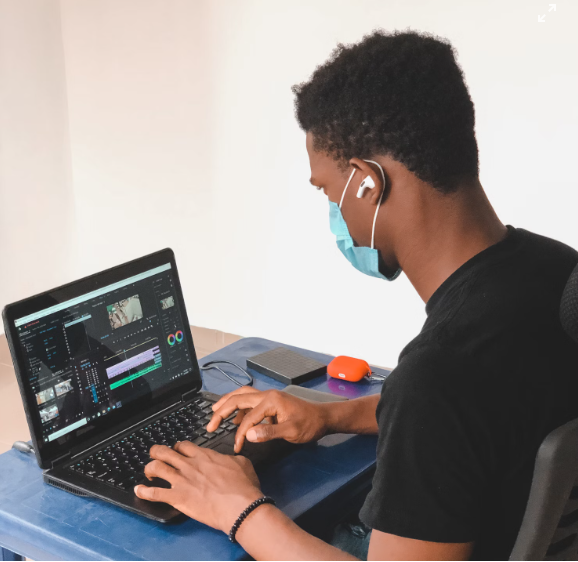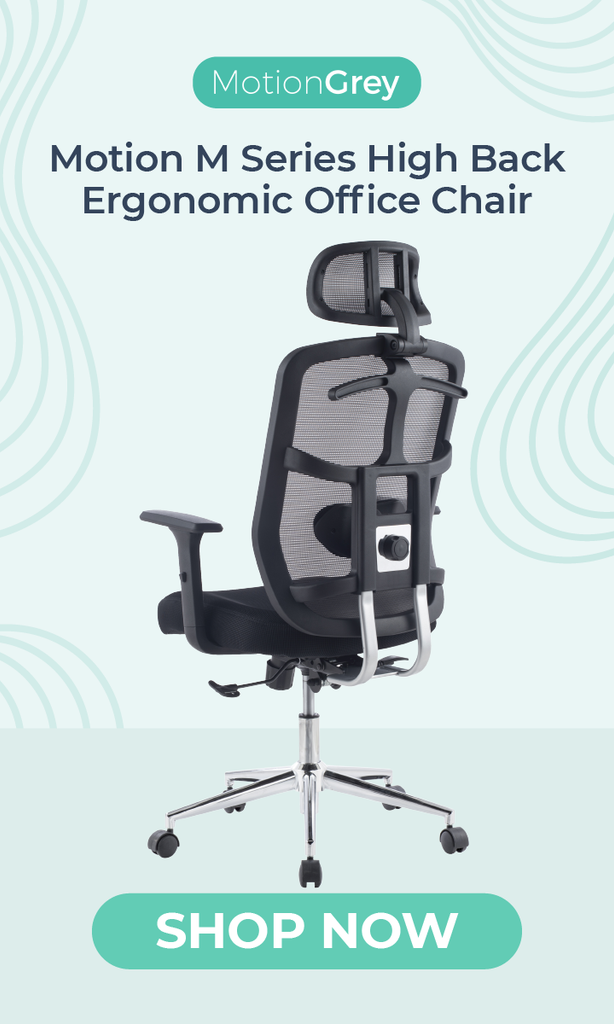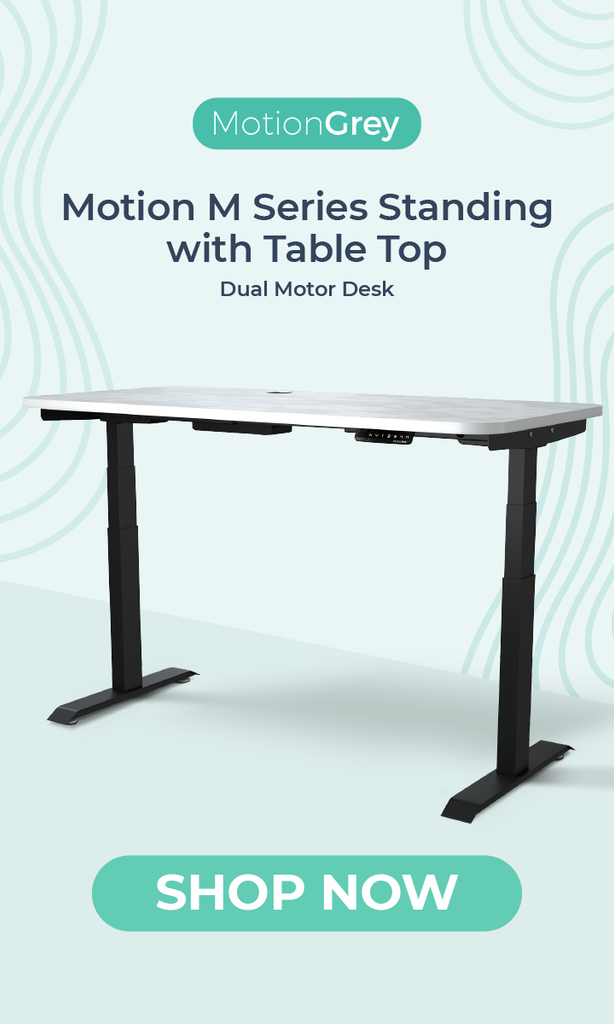Ergonomic Keyboard and Mouse Solutions for Turtleneck Syndrome
In today's digital age, where computers have become an integral part of our daily lives, the prevalence of musculoskeletal disorders stemming from improper ergonomics has been on the rise. Among these, "turtleneck syndrome" stands out as a particularly concerning issue affecting individuals who spend prolonged hours working on computers. Turtleneck syndrome, characterized by neck and shoulder pain, stiffness, and discomfort, is often a result of poor posture and repetitive strain injuries caused by prolonged use of computer and gadgets like mobile phone.

However, there's good news: specially designed ergonomic equipment such as keyboard and mouse offer a ray of hope in combating this prevalent issue. You’d think these accessories are entirely unrelated to turtle neck, but you’d be surprised to find that poor posture affects the entire body. And by prioritizing user comfort and promoting natural hand and wrist alignment, these innovative peripherals are crucial in preventing turtleneck syndrome and other related musculoskeletal disorders.
Understanding the Factors Contributing to Turtleneck Syndrome
Before delving into the solutions, it's essential to understand the factors contributing to turtleneck syndrome, also known as text neck syndrome. Prolonged periods of typing and mouse usage on traditional keyboards and mice often force users into unnatural postures, leading to strain on the neck, shoulders, wrists, and hands. The continuous flexion of the neck while hunching over a keyboard, coupled with the repetitive movements of the hands and wrists, exacerbates muscle tension and increases the risk of developing turtleneck syndrome or text neck syndrome.

Enter Ergonomic Keyboards and Mice to Prevent Severe Turtle Neck Syndrome
Ergonomic keyboards and mice are meticulously designed to address the ergonomic challenges posed by traditional computer accessories. These advanced devices incorporate a variety of features aimed at promoting proper posture, reducing strain, and enhancing overall comfort during extended computer use.
Split Keyboards
One of the hallmark features of ergonomic keyboards is their split design, allowing users to position their hands more naturally and flexibly. By separating the keyboard into two distinct halves, split keyboards encourage a more neutral wrist position, minimizing wrist extension. This ergonomic design not only reduces strain on the wrists but also alleviates tension in the shoulders and neck, mitigating the risk of turtleneck syndrome or text neck syndrome.
A study published in the Journal Applied Ergonomics titled "Effect of Split Keyboard Geometry on Wrist Extension and Ulnar Deviation" by Faucett et al. (2017) concluded that split keyboards significantly reduce conditions like wrist extension and ulnar deviation, which are risk factors for musculoskeletal disorders.
Adjustable Angles
Another key feature of ergonomic keyboards is their adjustable angle settings. These keyboards often come with built-in mechanisms that allow users to customize the keyboard's tilt and elevation according to their preferences. By enabling users to find their optimal typing angle, adjustable keyboards promote a more comfortable typing experience and help prevent excessive strain on the neck and shoulders.
According to Cornell University Ergonomics Web, adjustable keyboard angles can help users find a more comfortable typing position, reducing strain on the neck and shoulders. This information is supported by various ergonomic guidelines provided by organizations such as the Occupational Safety and Health Administration.
Wrist Support
Many ergonomic keyboards feature integrated wrist rests or detachable pads designed to support the wrists and promote proper alignment. By providing cushioned support for the wrists during typing, these ergonomic accessories help reduce pressure on the median nerve and alleviate the risk of developing conditions like carpal tunnel syndrome. Additionally, wrist supports encourage users to maintain a neutral wrist position, preventing excessive flexion or extension that can contribute to turtleneck syndrome or text neck syndrome, as well as other posture-related problems.
The American Academy of Orthopaedic Surgeons (AAOS) recommends the use of wrist supports or pads to maintain a neutral wrist position during typing, which can help alleviate pressure on the median nerve and prevent conditions like carpal tunnel syndrome.

Ergonomic Mice
In addition to ergonomic keyboards, specially designed ergonomic mice also play a vital role in preventing severe turtleneck syndrome. Ergonomic mice feature contoured shapes and intuitive designs that support the natural curvature of the hand, reducing muscle tension and fatigue during extended mouse usage. Some ergonomic mice also incorporate adjustable DPI settings and programmable buttons, allowing users to customize their mouse experience for optimal comfort and efficiency.
A systematic review published in the Journal of Occupational Rehabilitation titled "Ergonomic Interventions for Preventing Musculoskeletal Disorders in Computer Users" by Brewer et al. (2016) found evidence supporting the effectiveness of ergonomic mice in reducing muscle tension and fatigue during prolonged computer use.
Practical Tips for Using Ergonomic Peripherals Effectively to Prevent Severe Turtle Neck Syndrome
- Maintain Proper Posture: Regardless of ergonomic accessories, maintaining good posture is crucial. Sit up straight with your shoulders relaxed and your feet flat on the floor. Keep your elbows close to your body and your wrists in a neutral position.
- Adjust Keyboard Height: Set your keyboard at a height that allows your elbows to be at a 90-degree angle when typing. This helps prevent strain on your shoulders and wrists.
- Split Keyboard Placement: Position the two halves of your split keyboard shoulder-width apart. This encourages a more natural arm position, reducing strain on the wrists and shoulders.

- Use Wrist Support: If your ergonomic keyboard comes with wrist support or pads, make sure to utilize them. These accessories help maintain a neutral wrist position and alleviate pressure on the median nerve.
- Take Frequent Breaks: Even with ergonomic peripherals, it's essential to take regular breaks. Stand up, stretch, and walk around every 30 minutes to relieve muscle tension and promote circulation.
- Alternate Mouse Hands: If you're using an ergonomic mouse, consider alternating between your left and right hands to reduce strain on one side of your body. This can help avoid overuse injuries and prevent severe turtle neck syndrome.
- Customize Mouse Settings: Adjust the DPI settings and button configurations of your ergonomic mouse to suit your preferences and usage habits. This can enhance comfort and efficiency during prolonged computer use.
- Incorporate Stretching Exercises: Incorporate wrist, neck, and shoulder stretching exercises into your daily routine to prevent stiffness and improve flexibility. Simple stretches can help alleviate tension and reduce the risk of musculoskeletal disorders.
- Stay Hydrated: Drink plenty of water throughout the day to keep your muscles and joints hydrated. Dehydration can exacerbate muscle tension and fatigue.
- Consult with a Professional: If you experience persistent discomfort or pain despite using ergonomic peripherals and following ergonomic guidelines, consider consulting with an ergonomics expert or healthcare professional for personalized advice and recommendations to address severe turtle neck syndrome.
Ergonomic keyboards and mice offer tailored solutions to promote comfort and natural alignment, crucial for preventing severe turtleneck syndrome and related disorders. Features like split keyboards, adjustable angles, and wrist support mitigate strain on wrists, shoulders, and necks. Research supports their effectiveness in reducing musculoskeletal strain.
Using ergonomic accessories is only part of the solution in preventing severe turtle neck syndrome. You must also maintain proper posture, take breaks, and incorporate stretching exercises. Consulting professionals for personalized advice is essential if discomfort persists.
Prioritizing ergonomics isn't merely about comfort; it's a proactive measure to protect your musculoskeletal health and fix turtle neck. Investing in ergonomic accessories will safeguard you against debilitating injuries and enhance your overall well-being. Take charge of your health today for a more comfortable and productive tomorrow.
About Us
MotionGrey is a Canadian standing desk company that specializes in ergonomic furniture. We supply and install only the best quality standing desks and ergonomic chairs in the country. We offer free shipping within Canada and the US.
What made you switch to standing desks? Our products are designed with wellness as the focal point. From our electric standing desks to our office and gaming chairs, we deliver best value by putting your health, safety, and comfort as top priority. Boost your creativity and level up work performance. We want you to create great outcomes so we’re providing you only the best tools to make them possible.
If you are not satisfied with your purchase, check out our Refund Policy.





